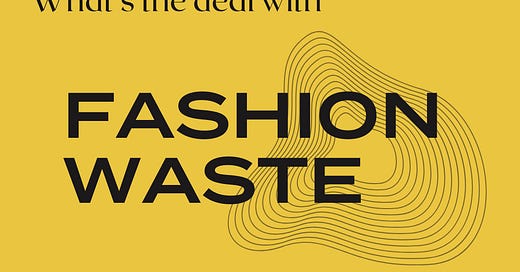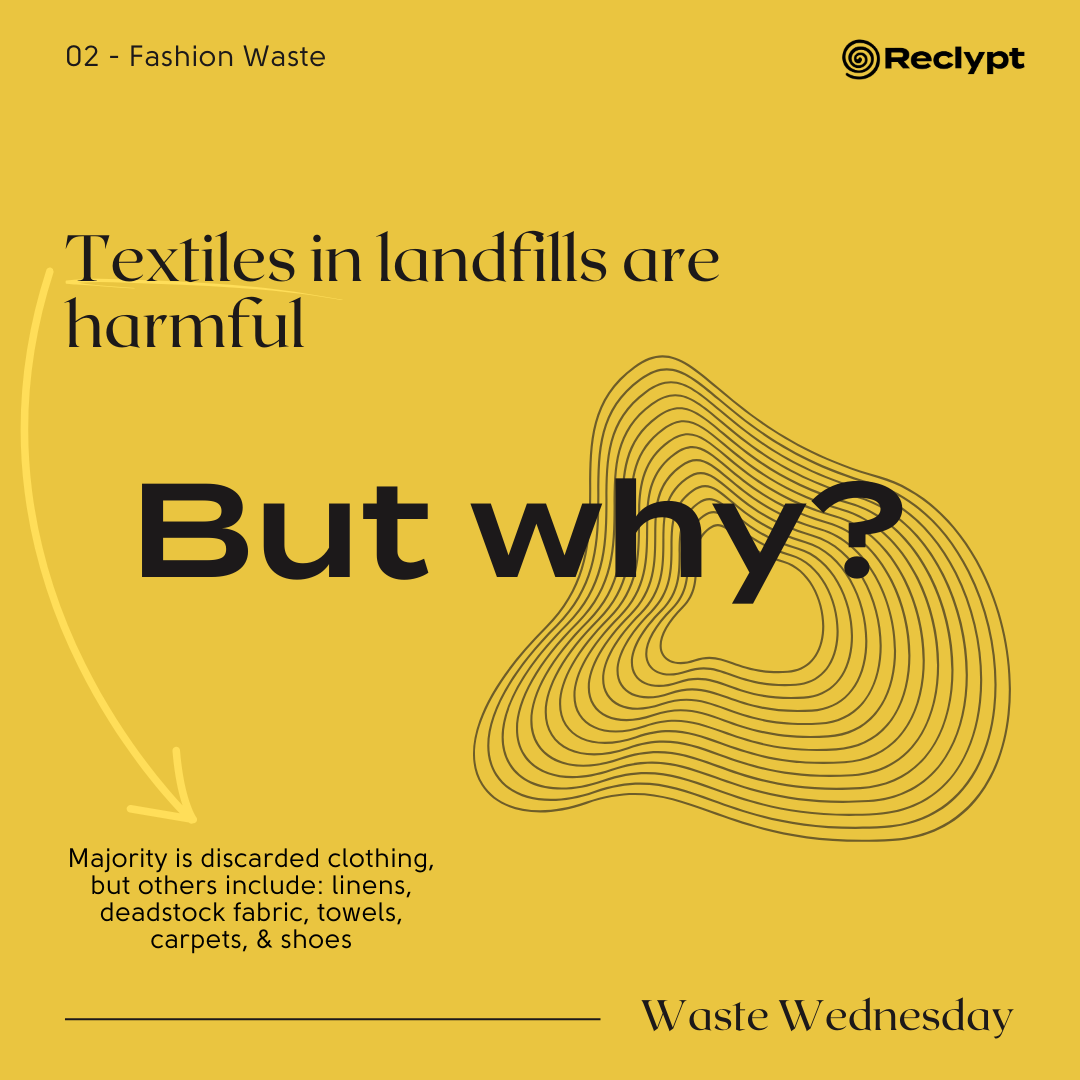Welcome to our newest weekly dive: Waste Wednesday!
The theme for our 2nd Circular Fashion Playground is “Don’t Throw That Away” and in anticipation we’re exploring WASTE!
Reclypt’s Circular Fashion Playground is a day to explore all aspects of circular fashion through panels, upcycling workshops, swaps, a reading nook, pop-up markets, mending clubs, repair cafes, and more.
We’re bringing all things circular fashion under one roof for you to experience, discuss, reflect, practice, and most importantly play! No matter where you are on your circular journey (especially if you haven’t started yet) all are welcome April 13th from 12-5:30p at Project Farmhouse (Union Sq.)!
So let’s get into it: Fashion Waste
It’s becoming more and more apparent that textiles in landfills are incredibly harmful, but do you know why?
We’ve outlined a few reasons below.
Before you get overwhelmed, encouraging a shift towards a circular economy can help minimize the impact of fashion waste, and that’s what we’re here to do!
Toxic Emissions: When textiles break down, especially through processes like burning or decomposition, they can release harmful substances and gases into the air. This includes greenhouse gases and pollutants that contribute to air pollution and negatively impact air quality.
Slow Decomposition: Many textiles, especially those made from synthetic fibers like polyester, take a long time to decompose. This slow breakdown process can lead to a buildup of waste in landfills, contributing to space constraints.
It’s important to note that polyester, nylon, acrylic, and other synthetic fibers are forms of plastic
They make up about 60 percent of our clothes, globally.
***Join us next week to learn more about Decomposition of Fashion Waste!
Soil Contamination: Decomposing textiles can release chemicals and dyes into the soil, contaminating the land. This contamination can have adverse effects on the health of local agriculture and ecosystems.
Water Pollution: Rainwater can leach through landfills, picking up contaminants from decomposing textiles along the way. This runoff, known as leachate, may carry pollutants into nearby water sources, leading to water pollution and potentially harming aquatic ecosystems.
Resource Depletion: The production of textiles involves significant resources, including water, energy, and raw materials. When textiles end up in landfills instead of being recycled or repurposed, these valuable resources go to waste, contributing to resource depletion and the environmental impact associated with manufacturing new products.
Social Impact: The disposal of textiles in landfills can have social implications, especially in regions where landfills are located. Communities near landfills may experience health issues due to air and water pollution, and the presence of large waste disposal sites can negatively affect property values and overall well-being.






